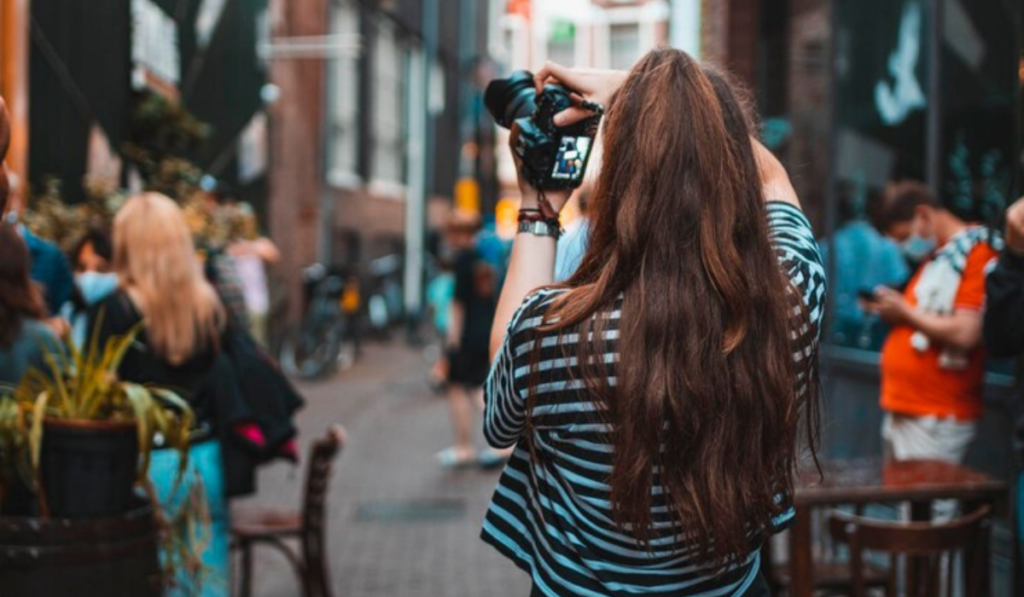Street Photography: A Complete Guide

Street photography captures candid moments and everyday life in public places. A comprehensive overview of street photography, including practical tips and ethical considerations, is provided in this guide.
The origins of street photography
The roots of street photography can be traced back to the late 19th and early 20th centuries. Street photographers such as Eugène Atget documented the disappearing aspects of Parisian life in his “Old Paris Series.” New York-based photographer Berenice Abbott continued this tradition in New York City.
The evolution of street photography
It was further propelled by legendary photographers such as Henri Cartier-Bresson and Robert Doisneau in the mid-20th century. As technology advanced, photographers began to capture street scenes with newfound spontaneity and mobility, especially when the Leica-I camera was introduced.
Street photography today: what it is
A street photographer captures candid moments with a deliberate visual message, which is different from typical tourist snapshots. With a unique perspective, it aims to reveal the beauty and complexity of urban environments through the lens of everyday life.
The benefits of street photography
The benefits of street photography are numerous. By exploring the unexplored and documenting history as it unfolds, it allows photographers to express themselves creatively. Moreover, street photography can serve as a means of self-discovery and a way to connect with the world.
A consideration of ethics
Street photography requires photographers to navigate issues of privacy, legality, and exploitation sensitively. Taking public photographs requires respect for subjects’ privacy, an understanding of the legalities surrounding such photography, and an awareness of potential exploitation.
Selection of equipment
A compact and inconspicuous camera is often preferred for street photography, though any camera can be used. In order to capture candid moments, mirrorless cameras and prime lenses offer photographers mobility and versatility.
Settings for the camera
For street photography to be effective, camera settings must be adjusted. Photographers can capture decisive moments with precision and clarity by adjusting aperture, shutter speed, and ISO, as well as focusing techniques and handling low-light conditions.
Taking better street photos
It takes practice, exploration, and attention to detail to improve street photography. In order to refine skills and develop a personal style, continuous learning and development are key. That includes focusing on small details and experimenting with compositions.
Loosely planning
Street photography projects can be guided by thematic goals that provide structure and focus, helping photographers explore different locations and subjects. While allowing for spontaneity and creativity, a loose plan keeps photographers engaged and inspired.
Development and Learning on a Continuous Basis
To grow as a street photographer, you must continue to learn and develop. A photographer’s skill can be refined and expanded by practicing, experimenting, and studying the work of masters.
Street photography is a rich tapestry of moments, emotions, and stories waiting to be captured. A rewarding journey of self-expression and discovery can be achieved through the lens of the streets by embracing its historical roots, navigating ethical considerations, and honing technical skills.



